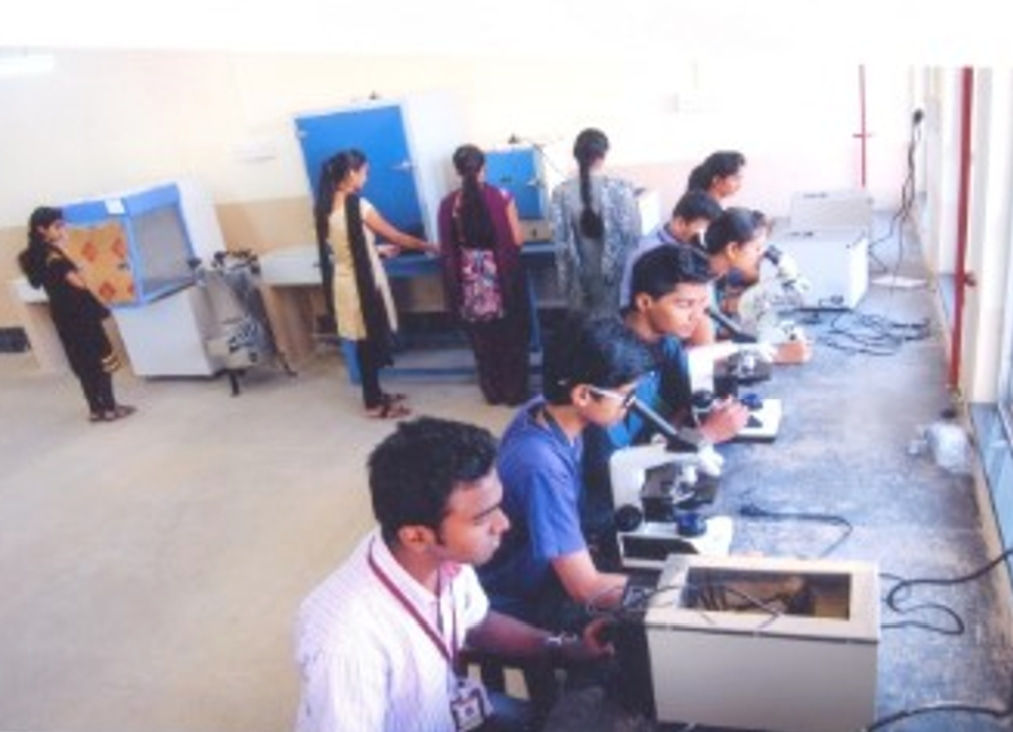The department of Biology came into existence in 1948. Botany was a minor subject at degree level. In 1971 Botany was introduced as one of major subject at degree level. Due to the increasing demand of student the department came up with PG botany in 2015. The department has well developed infrastructure like laboratories, ICT lab, LCD Display, Instrumentation room, department Library, Botany Museum, botanical garden, cactus garden, herbal medicinal garden, Vermicompost unit, Effluent treatment Plant, water harvesting pit and glass house. The faculty are highly qualified and actively involved in teaching and research.
Actively publishes research papers in national and international journals. The faculty are invited as resource persons and to deliver talks in various institutions. Department organises National seminars, conferences and workshops. Conducts certificate courses in green house technology and Waste water treatment for student’s self-employability. The department organises study tours, industry visit, Research center visit etc. the department has MoU with Mr. Pradeep Bagi, Consultant for greenhouse technology, Belagavi and Mhadei research centre, Chorla, Belagavi.
Botanical garden of the college established in the year 1974 is situated in an area of 1.5 Acres and very well maintained. It has a collection of 150 species of flowering plants, medicinal plants including a, six Gymnosperm plant species and a very rare species of Zamia, available only in our garden, all labelled with QR Code. Other important features of the garden are the Cactus House and the Shade House, to grow the shade loving plants. There is an Effluent Treatment Plant (ETP) to treat waste water discharged from Chemistry laboratories.
To create interest in students about plantation as a part of forest conservation, the department has planted palms of Andaman and Nicobar Island in botanical garden. The garbage management always tries to make the college campus Eco-friendly. Vermicompost is prepared with the help of a mulch of tree leaves that occurs around the college campus. These Vermicompost are again utilized as Vermicompost manure for plants in the botanical garden and various gardens of a college campus. For this purpose, four lady swipes are recruited by college management that collects the plant debris from the college campus and dumps it on Vermicompost units. Every day approximately 30 kg of plant debris including leaves and dry stem of the plant is dumped in five different Vermicompost units with size 20 feet long, 5 feet wide, and 3 feet height. The college produces Vermicompost from the mulches of leaves of trees that are scattered on the campus. The produced Vermicompost was used as fertilizers for trees

Botanical Garden |

QR Code system |

Medicinal plants of Botanical Garden. |

Instrumentation and Research Facilities: |
| Sl No. | Flora details | Number |
|---|---|---|
| 1 | Flowering plant species | 150 |
| 2 | Gymnosperm species | 6 |
| 3 | Pteridophytes species | 15 |
| 4 | Bryophyte’s species | 6 |
| 5 | Cactus species | 171 |
| 6 | Medicinal plants | 50 |
| 7 | Aquatic plants | 4 |
| 8 | Palm species | 48 |
| 9 | Exotic Rare African plant variety | 1 |
| 10 | Fungi | 90 |
| Sl No. | Fauna Details | Number |
|---|---|---|
| 1 | Insect species | 78 |
| 2 | Butterflies (Insect) species | 33 |
| 3 | Amphibians’ species | 9 |
| 4 | Reptiles’ species | 14 |
| 5 | Bird species | 46 |
| 6 | Mammals’ species | 17 |
Department of Botany have museum with 252 specimens, including various specimens of different taxonomic groups Algae (23), Fungi (15), Bryophytes (08), Pteridophytes (16), Gymnosperms (19), Angiosperm (101). Museum also have collection of rare lichens from Antarctica and eighteen Bamboo and fifty one different wood species.
The Effluent treatment Plant is installed in Botanical Garden of GSS College. The objective is to treat the effluent coming from Chemistry laboratory and reuse the treated water for Botanical Garden.